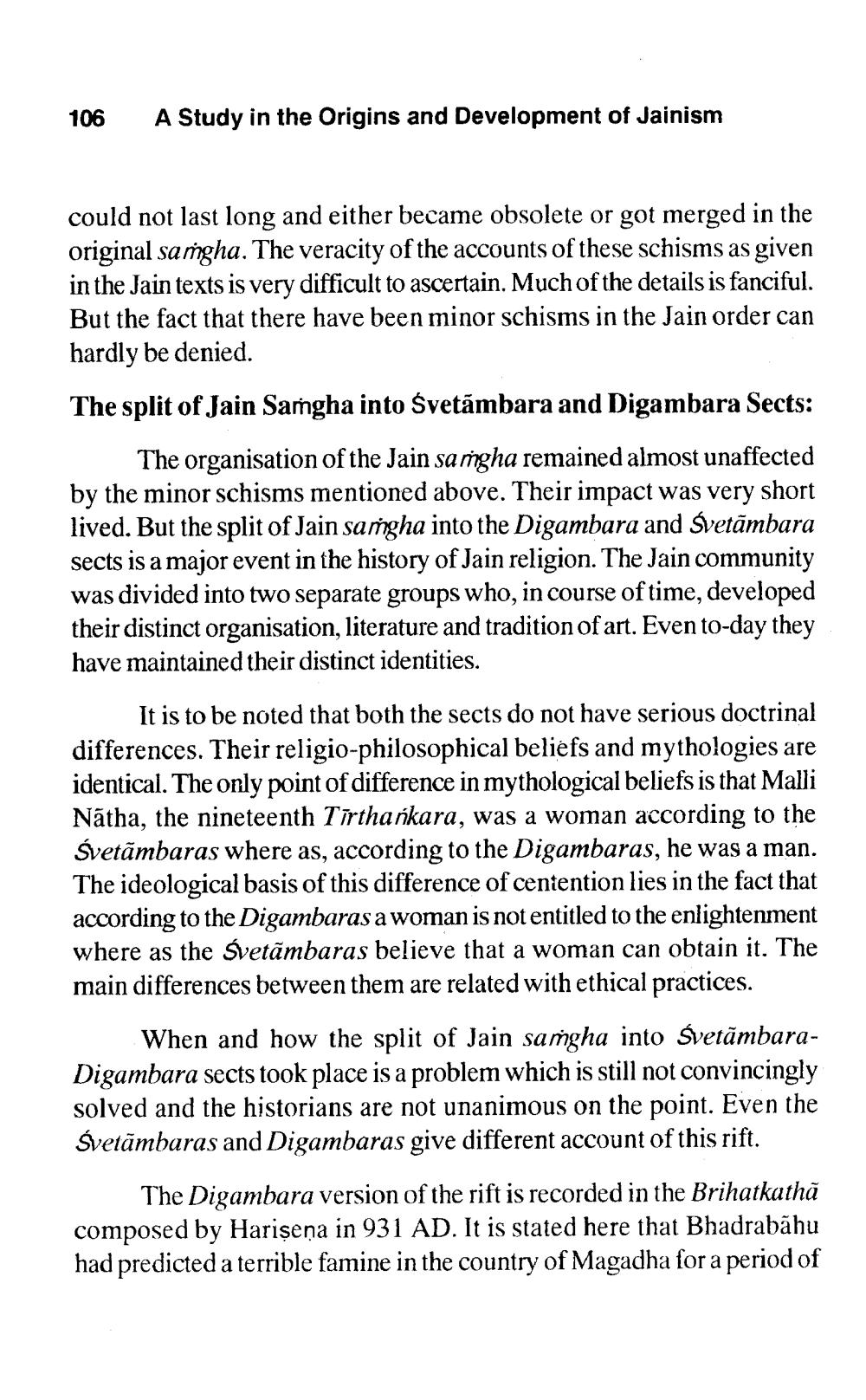________________
106 A Study in the Origins and Development of Jainism
could not last long and either became obsolete or got merged in the original samgha. The veracity of the accounts of these schisms as given in the Jain texts is very difficult to ascertain. Much of the details is fanciful. But the fact that there have been minor schisms in the Jain order can hardly be denied.
The split of Jain Samgha into Svetambara and Digambara Sects:
The organisation of the Jain samgha remained almost unaffected by the minor schisms mentioned above. Their impact was very short lived. But the split of Jain samgha into the Digambara and Svetambara sects is a major event in the history of Jain religion. The Jain community was divided into two separate groups who, in course of time, developed their distinct organisation, literature and tradition of art. Even to-day they have maintained their distinct identities.
It is to be noted that both the sects do not have serious doctrinal differences. Their religio-philosophical beliefs and mythologies are identical. The only point of difference in mythological beliefs is that Malli Natha, the nineteenth Tirthankara, was a woman according to the Śvetambaras where as, according to the Digambaras, he was a man. The ideological basis of this difference of centention lies in the fact that according to the Digambaras a woman is not entitled to the enlightenment where as the Svetambaras believe that a woman can obtain it. The main differences between them are related with ethical practices.
When and how the split of Jain saṁgha into SvetāmbaraDigambara sects took place is a problem which is still not convincingly solved and the historians are not unanimous on the point. Even the Svetambaras and Digambaras give different account of this rift.
The Digambara version of the rift is recorded in the Brihatkatha composed by Hariṣeṇa in 931 AD. It is stated here that Bhadrabahu had predicted a terrible famine in the country of Magadha for a period of




